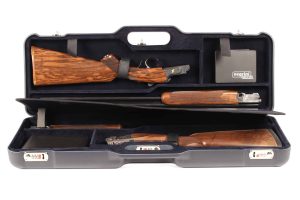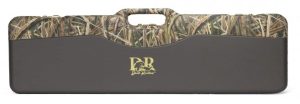Guidelines for Flying with Your Shotgun
In an era characterized by heightened security measures, flying with a firearm, such as a shotgun, requires a clear understanding of both legal aspects and airline policies. While the right to bear arms is protected by the Second Amendment, it doesn’t exempt individuals from adhering to the strict guidelines in place to secure air travel. In this article, we will explore the legal aspects of flying with a shotgun, key airline policies, practical packing tips, and how to handle potential issues at airport security checkpoints.
Understanding Legal Aspects of Flying with a Shotgun
While the Second Amendment of the United States Constitution affirms the right to carry firearms, the Transportation Security Administration (TSA) sets strict guidelines for traveling by air with guns. It is legal to transport unloaded firearms in a checked bag if it is packed in a locked hard-sided container. Additionally, the firearm parts, including magazines, clips, bolts, and firing pins should be properly protected. However, the TSA strictly prohibits carrying firearms, including shotguns, in carry-on bags.

State laws also play a significant role when flying with a shotgun. While it’s legal to carry a shotgun in some states without a permit, others have stricter gun control laws. For instance, states like New York and California require permits even for shotguns. Therefore it’s vital that travelers research and understand the relevant laws of the states they’re traveling from and to.
International travel with a shotgun presents an additional layer of complexity. Some countries have very strict laws regarding firearms and may not permit them to be brought in at all. Therefore, it is essential to understand the specific laws of the country you intend to visit before you travel.
Key Airline Policies for Transporting Firearms
Airlines have their own individual policies on firearm transportation, and it’s crucial to familiarize yourself with these before you fly. Most airlines will allow firearms to be transported in checked luggage, as long as they meet TSA regulations and are declared at check-in.
In addition to TSA rules, many airlines require firearms to be transported in a hard-sided, lockable case, and some may have specific restrictions on the type of lock used. Furthermore, airlines may apply extra charges for transporting firearms, so it is important to check this beforehand.

One key point to remember is that ammunition cannot be transported in the same case as the firearm and must be separately packed in a way that prevents movement. Each airline may have its own limitations on the amount of ammunition that can be carried, so always verify this before you travel.
Practical Tips for Packing a Shotgun for Air Travel
When packing a shotgun for air travel, it’s important to start with a high-quality, hard-sided case that can be locked. The TSA suggests using a case that provides a snug fit to prevent the shotgun from moving around during transit.
Next, you’ll need to unload your shotgun completely. This includes removing any shells from the chamber or any attached magazine. It’s crucial to remember that the TSA checks the firearm to ensure it is completely unloaded at the time of inspection.
Finally, pack your shotgun in a way that it is easily accessible for inspection at the airport. This includes placing any keys or combinations to the lock inside the case, in an envelope, or directly handing them over to the TSA officer. Remember to pack your ammunition separately in a secure box or case.

Handling Potential Issues at Airport Security Checkpoints
Even with meticulous packing and preparation, issues may still arise at security checkpoints. In such situations, maintaining a calm and cooperative demeanor can go a long way in resolving the issue promptly.
If your case is flagged for additional screening, be prepared to unlock the case and allow officers to inspect your firearm. Remember, TSA officers have final authority on whether an item is allowed on the plane. If a dispute arises, it is best to request a supervisor.
Finally, ensure you have all necessary documentation for your shotgun, including any relevant permits or licenses. This can be critical in resolving any potential issues at security checkpoints.
Travelling with a shotgun can be a complex process, but understanding the legal aspects, airline policies, and packing guidelines can help streamline the experience. It’s essential to do your research and adhere to all guidelines for a smooth journey. Remember, every airline and country may have different rules and it’s your responsibility to understand and comply with them. With careful planning and preparation, flying with a shotgun can be hassle-free.
# # #


Comments